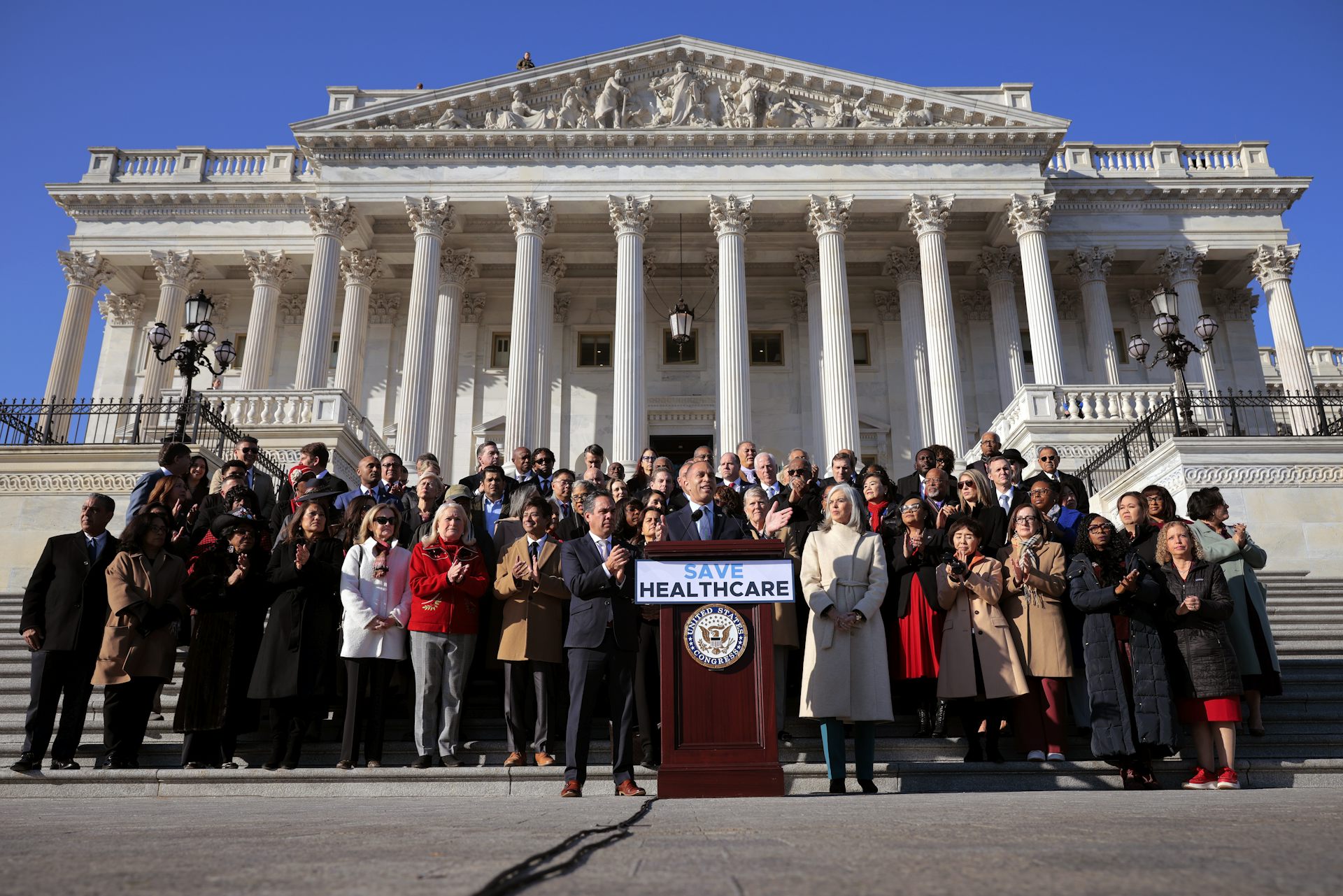How pharmacists can help solve medication errors
The medication landscape is complicated and error-riddled, with very few care providers knowing all the drugs you are taking. Here's how pharmacists could be the solution.

In today’s health care system, no one person – maybe not even you – knows exactly what drugs you’re taking. What’s more, no one health care provider knows how you, the patient, take your medications and at what doses. No single, up-to-date record consistently displays all of this important information.
The lack of an accurate medication list, and the associated lack of centralized and expert management of your full drug regimen, has serious consequences.
A 2016 study at the Johns Hopkins University School of Medicine suggested that medical errors are the third leading cause of death in the United States. Many of these deaths are directly related to errors associated with medications. The Centers for Disease Control and Prevention estimates 1 million visits to emergency rooms each year stem from adverse medication events.
In addition, thousands of people are harmed by suboptimal medication management, or because they don’t take their medications as directed. And millions of health care dollars are wasted each year in the form of duplicated or unneeded drugs and medication-related hospital readmissions.
As dean of the UCSF School of Pharmacy, a school defined by science, as well as a researcher who has strived to improve the effectiveness and safety of medications, I think the key to solving these problems is to expand the role of pharmacists. My position on this point is based on accumulating evidence.
Investigating the problem
In a 2015-2016 project, UCSF School of Pharmacy pharmacists compared the accuracy of the medication lists of 135 newly discharged patients with the medications the patients actually ended up taking. Not one of these lists completely reflected medication use at home, despite the fact that each patient had been recently discharged from a controlled hospital environment.
Common errors included:
- Duplication of therapy (either getting two of the same medication or two drugs in the same class).
- Omitted but necessary medications.
- Unreported use of herbals or dietary supplements.

In a previous project in 2014, as part of a new transition of care program, patients received an automated phone call 48 hours after leaving the hospital. Any reported issues resulted in an immediate phone call by a nurse and pharmacists addressed any medication issues.
An unpublished study of these post-discharge phone calls by the School of Pharmacy revealed medication issues were common. Forty percent of the pharmacy calls during the study period involved access, such as insurance coverage or transportation to a pharmacy, while 60 percent involved clinical issues, including medication side effects, interactions or medication use instructions.
As a result of these findings, a voluntary program was offered to allow patients to receive their discharge medications at the bedside before going home in a meds-to-beds program. No meds-to-beds patients reported being without their discharge prescriptions at the 48-hour discharge phone call. The School of Pharmacy continues to study the outcomes associated with this program.
In 2016, the UCSF School of Pharmacy initiated another pilot project, teaming with the UCSF School of Dentistry in the Oral Medicine Clinical Center. This clinic manages the most serious mouth diseases, including soft tissue infections and cancers. Many drug treatments are associated with side effects, including bleeding, dry mouth and other systemic adverse events that affect oral health.
Our pharmacy faculty members and pharmacy students mentored and collaborated with their dental colleagues to complete a comprehensive medication review for patients prior to clinic visits. The team, in close collaboration with their patients, created an accurate medication list and placed the list in the patients’ electronic records on the day of the clinic visit.
When their providers took the time to discuss the importance of their medication lists, the patients routinely began bringing these lists to their clinic visits. Similarly, clinic health care providers began taking responsibility for updating patients’ electronic health records with new medications. The success of the experiment is underscored by the fact that the dental school has continued to fund this novel model of care.
The path forward
I am hopeful the results of our pilots suggest a way forward.
As the above examples suggest, pharmacists can increase the efficiency and impact of a whole health care team. Pharmacists have been doing this for years in hospitals, and it’s time for them to do it in the community as well. For patients, that means having a professional consistently reviewing the accuracy of their medication lists and ensuring all drugs are safe and effective.
Pharmacists know how drugs act and interact in the body. They are experts regarding medication choice and side effects. And they understand how to work with insurers on behalf of their patients. Their mission is to ensure the individual patient is receiving the right drugs at the right time, and that the drugs are safe, effective and affordable. They’re also generally adept at determining if the patient is willing and able to take the needed medication. Pharmacists have the credentials and training to perform all these critical tasks. They carry doctoral degrees and, of course, must be licensed to practice.
Some progress has been made in expanding the role of pharmacists to ensure patients are receiving safe, effective medication therapy.
California has started to implement a state bill, SB 493, that enables pharmacists to “furnish” – the law’s language for prescribing – certain medicines, like vaccinations and birth control, and to manage drug regimens for chronic diseases. Washington and other states have enacted similar legislation.
Another California state bill, AB 1535, enables pharmacists to furnish naloxone for opioid overdoses.
A critically important part of the change, the ability for pharmacists to get paid for these services, is still being worked out, first by Medicare and Medicaid reimbursement and then by third-party payors and pharmacies.
Two related national bills with bipartisan support, S. 109 and H.R. 592, could give provider status to pharmacists under Medicare, which would extend the role of pharmacists in primary care, including an associated model for reimbursement.
I believe this is good news for patients and another solution to our shortage of primary care providers, especially in rural areas.
However, the lack of an accurate medication list with expert oversight remains a serious – and sometimes deadly – gap in patient care.
Let pharmacists do their best work
Ensuring an accurate, managed medication list for each patient would require a radical change in the business of health care. The current community pharmacy business model is based upon the volume of drugs dispensed. In a new patient-centered model, pharmacists would be reimbursed for dispensing their advice to patients, just as they are for dispensing drugs. In this model, the pharmacist is a critical member of the patient’s health care team.
A tectonic shift in business models might seem like a lot to ask, but empowering pharmacists with the ability to fully apply their extensive medication knowledge is an obvious next step toward ensuring patients receive the safest, most effective drug therapy.
Couple the power of an accurate medication list with the medication expertise and management of the pharmacist, and I see patient health improving, adverse drug events falling and health care dollars being saved in the process.
For now, it’s your responsibility
For today, the solution is simple, but not ideal: You, the patient, not the health care provider, must take full responsibility for maintaining a personal, accurate list of all your medications, including all of your prescription and over-the-counter drugs, herbals and dietary supplements. And you must carry this list with you at all times and be responsible for sharing it with your provider at each health care visit.
For the future, a much better solution is possible: A medication expert will take full responsibility for reviewing your list with you. This expert will ensure that the medications you’re taking are safe, work for you and are affordable. This expert will consider your personal situation and all your health conditions in relation to the medications and will address any concerns with fellow providers on your health care team.
I believe the pharmacist is the medication expert that’s needed to implement the complete solution. And our evidence suggests that this approach is effective.
B. Joseph Guglielmo does not work for, consult, own shares in or receive funding from any company or organization that would benefit from this article, and has disclosed no relevant affiliations beyond their academic appointment.
Read These Next
How the ‘slayer rule’ might play a role in determining who will inherit wealth from Rob Reiner and h
These rules have a long history in the United States. They played a role in the notorious murders by…
People are getting their news from AI – and it’s altering their views
Even when information is factually accurate, how it’s presented can introduce subtle biases. As large…
It’s more than OK for kids to be bored − it’s good for them
Boredom is a healthy part of life. Experiencing it can help children learn to set goals and make plans.






